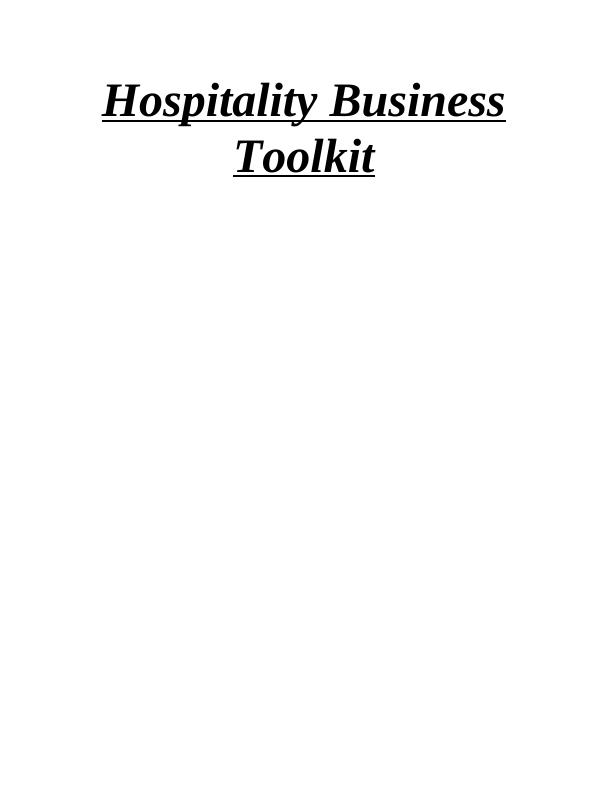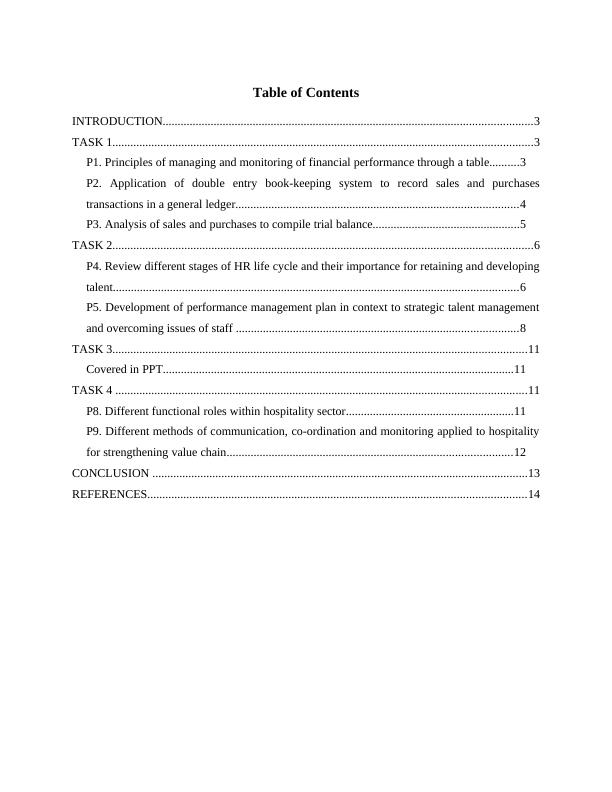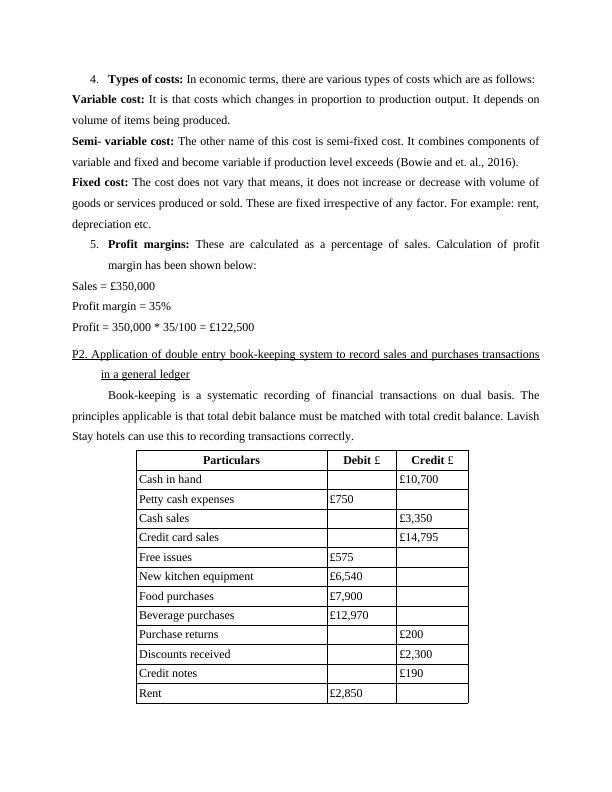Hospitality Business Toolkit - Assignment
Added on 2020-11-12
14 Pages3693 Words165 Views
Hospitality BusinessToolkit

Table of ContentsINTRODUCTION...........................................................................................................................3TASK 1............................................................................................................................................3P1. Principles of managing and monitoring of financial performance through a table..........3P2. Application of double entry book-keeping system to record sales and purchasestransactions in a general ledger..............................................................................................4P3. Analysis of sales and purchases to compile trial balance.................................................5TASK 2............................................................................................................................................6P4. Review different stages of HR life cycle and their importance for retaining and developingtalent.......................................................................................................................................6P5. Development of performance management plan in context to strategic talent managementand overcoming issues of staff ..............................................................................................8TASK 3..........................................................................................................................................11Covered in PPT.....................................................................................................................11TASK 4 .........................................................................................................................................11P8. Different functional roles within hospitality sector........................................................11P9. Different methods of communication, co-ordination and monitoring applied to hospitalityfor strengthening value chain...............................................................................................12CONCLUSION .............................................................................................................................13REFERENCES..............................................................................................................................14

INTRODUCTIONHospitality industry provides variety of services in order to fulfil demands of customers.It involves many fields such as hotel which provide accommodation services, restaurant givesfood services, travelling services etc. It is a growing industry in every country. In order to meetthe needs of customers and survive in competition, it requires adequate financial and humanresources in order to conduct its activities without any hindrance (Anderson and et. al., 2017).Further, the other non-financial aspects such as legislation that impact the business greatly. Thechosen company to understand impact of various financial and non-financial is Lavish StayHotels headquartered at Cardiff Bay, London. The report covers management of financialrecords to minimise costs incurred, assessment of human resource life-cycle in the context of HRstrategy, potential impact of legal and ethical considerations and importance of co-ordinating andintegrating various functions within hospitality sector. TASK 1P1. Principles of managing and monitoring of financial performance through a tableExpendituresIncomesBills Salary & wages DrinksAllowancesHousehold utility Benefits ClothesGifts1.Sales: The exchange of goods or services between a buyer and seller for a considerationis called sales. Organization operating in hospitality industry such as hotels sell theirrooms to guests or agents. 2.Purchase: It is refers to transferring ownership of an asset, property, right or item by oneperson to another for an amount of money (Bharwani and Butt, 2012. For example:wholesalers buy rooms in hotel in bulk and sell them to agents to earn more income. 3.Input cost: Input cost refers to total cost incurred to create a product or service. Theseare direct material costs, direct labour and factory overhead. Lavish Stay owns a bar,where drinks are made according to customers, hence, the items used to make a wholedrink involves certain input costs.

4.Types of costs: In economic terms, there are various types of costs which are as follows:Variable cost: It is that costs which changes in proportion to production output. It depends onvolume of items being produced. Semi- variable cost: The other name of this cost is semi-fixed cost. It combines components ofvariable and fixed and become variable if production level exceeds (Bowie and et. al., 2016). Fixed cost: The cost does not vary that means, it does not increase or decrease with volume ofgoods or services produced or sold. These are fixed irrespective of any factor. For example: rent,depreciation etc. 5.Profit margins: These are calculated as a percentage of sales. Calculation of profitmargin has been shown below:Sales = £350,000Profit margin = 35%Profit = 350,000 * 35/100 = £122,500P2. Application of double entry book-keeping system to record sales and purchases transactionsin a general ledgerBook-keeping is a systematic recording of financial transactions on dual basis. Theprinciples applicable is that total debit balance must be matched with total credit balance. LavishStay hotels can use this to recording transactions correctly. ParticularsDebit £Credit £Cash in hand£10,700Petty cash expenses£750Cash sales£3,350Credit card sales£14,795Free issues£575New kitchen equipment£6,540Food purchases£7,900Beverage purchases£12,970Purchase returns £200Discounts received £2,300Credit notes£190Rent£2,850

End of preview
Want to access all the pages? Upload your documents or become a member.
Related Documents
Impact of Financial and Non-Financial Factors on Hospitality Industry - Lavish Stay Hotelslg...
|15
|1383
|46
HR Life Cycle in Hospitality Business Toolkitlg...
|21
|4635
|498
Introducing Financial Transactions and Sourcing Documents in the Hospitality Businesslg...
|21
|1776
|25
The Hospitality Business Toolkitlg...
|12
|3711
|238
Hospitality Business Toolkit (Unit-04)lg...
|26
|5810
|460
Principles of Managing and Monitoring Financial Performance in Hospitality Businesslg...
|16
|3429
|90
